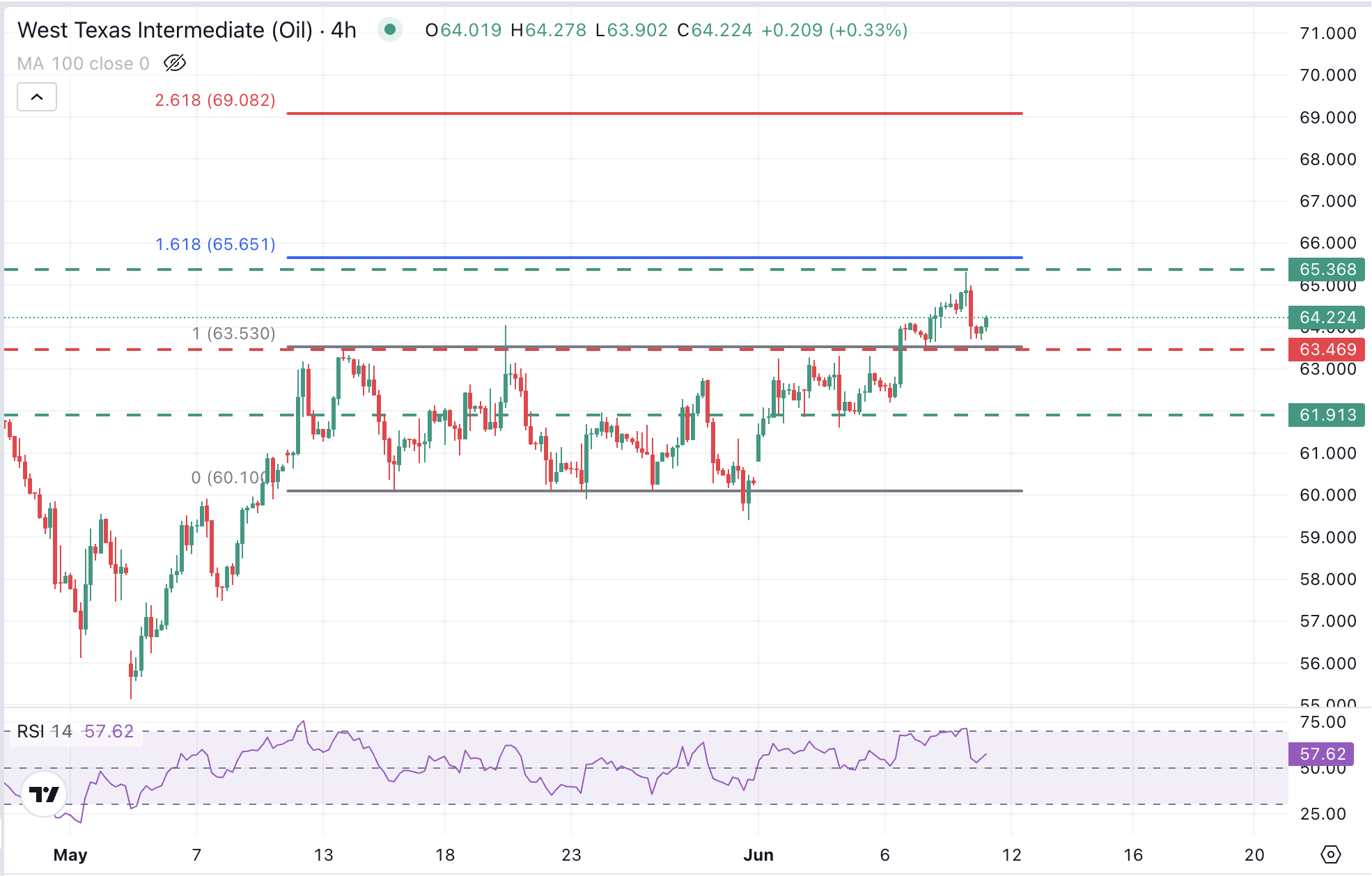WTI Price Forecast: Oil remains bullish with downside attempts capped at $63.45
- Oil prices retreat as the US-China deal fails to convince investors.
- The lack of details on the agreement has been received with a sceptical response.
- Technically, WTI Oil maintains its bullish stance while above $63.45.
Oil prices are showing a moderate reversal on Wednesday, as the vague news about the US-China trade deal has been taken with more scepticism than enthusiasm. The broader trend, however, remains positive, with prices standing comfortably above previous highs at the $63.50 area.
The Sino-US trade talks ended late on Tuesday with an alleged agreement to ease restrictions on rare earth’s commerce, bringing their trade relationship to the terms set in the Geneva summit last month. The deal needs to be ratified by the presidents of the US and China.
Technical analysis: Crude prices keep trending higher
The US benchmark WTI’s prices remain heading higher. Tuesday’s reversal from the $65.40 area has been contained above the previous resistance area, at $63.45, which suggests that dips are finding buyers so far. The 4-hour RSI remains in positive territory above 50.
On the upside, the next bullish target is at the $65.30 - $65.60 area where the June 10 high meets the 161.8% Fibonacci extension from mid-May’s correction. Above here, the 261.8% retracement is at $69.10.
On the downside, a bearish reaction below $63.45 (June 2,3,4, and 5 highs) would bring the $62.00 area (June 5 low) to the focus.
WTI 4-Hour Chart

WTI Oil FAQs
WTI Oil is a type of Crude Oil sold on international markets. The WTI stands for West Texas Intermediate, one of three major types including Brent and Dubai Crude. WTI is also referred to as “light” and “sweet” because of its relatively low gravity and sulfur content respectively. It is considered a high quality Oil that is easily refined. It is sourced in the United States and distributed via the Cushing hub, which is considered “The Pipeline Crossroads of the World”. It is a benchmark for the Oil market and WTI price is frequently quoted in the media.
Like all assets, supply and demand are the key drivers of WTI Oil price. As such, global growth can be a driver of increased demand and vice versa for weak global growth. Political instability, wars, and sanctions can disrupt supply and impact prices. The decisions of OPEC, a group of major Oil-producing countries, is another key driver of price. The value of the US Dollar influences the price of WTI Crude Oil, since Oil is predominantly traded in US Dollars, thus a weaker US Dollar can make Oil more affordable and vice versa.
The weekly Oil inventory reports published by the American Petroleum Institute (API) and the Energy Information Agency (EIA) impact the price of WTI Oil. Changes in inventories reflect fluctuating supply and demand. If the data shows a drop in inventories it can indicate increased demand, pushing up Oil price. Higher inventories can reflect increased supply, pushing down prices. API’s report is published every Tuesday and EIA’s the day after. Their results are usually similar, falling within 1% of each other 75% of the time. The EIA data is considered more reliable, since it is a government agency.
OPEC (Organization of the Petroleum Exporting Countries) is a group of 12 Oil-producing nations who collectively decide production quotas for member countries at twice-yearly meetings. Their decisions often impact WTI Oil prices. When OPEC decides to lower quotas, it can tighten supply, pushing up Oil prices. When OPEC increases production, it has the opposite effect. OPEC+ refers to an expanded group that includes ten extra non-OPEC members, the most notable of which is Russia.


